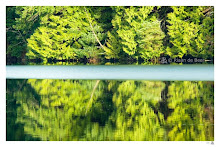
The image above is the famous photograph of the Halfdome in Yosemite that marked a major turning point is his development as a photographer. He had spent the day climbing and taking pictures with his friends, it was close to the end of the day and he had only one glass plate left. With the convenience of our current technology it is easy to forget that men like Adams had to use large format camera with prepared glass plates to make their images. It was tiring and gruelling work to carry the large camera, heavy wooden tripod and the glass plates, especially if the photographer was climbing a mountain.
So he had only the one plate left and it was the end of the day and he had spent the day climbing with his gear. One can imagine that he was probably tired and ready to wrap things up. Up until this moment he had been struggling to make photographs that he felt lived up to the grandeur and beauty of the Yosemite. It suddenly occurred to him that he could really darken the sky if he placed a deep red filter over the lens. He exposed the glass plate and the result was this amazing image with the sky almost black and the massive rock face looming overhead. For the first time he had captured the sense of the imposing size and overwhelming presence of the Halfdome. It was the break through he had been looking for.
It is easy to assume that Ansel simply printed his Photograph from the negative and that he got it all exactly the way he wanted on the glass plate. But nothing is further from the truth. Ansel likened the process of making photos to his background in music. He often said that the negative is like the music score and in a symphony and that the development of the image in the dark room is the performance. People who witnessed the process said that it was like watching somebody doing a dance as he moved around in the darkroom in front of the enlarger dodging and burning the print. It would often take him a whole day of solid work before he found the right performance of the negative and was satisfied with a print.
Ansel spent a lot of time working at extracting from the negative what his mind's eye had seen when he exposed the glass.



No comments:
Post a Comment